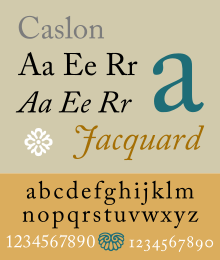Rotated letter

In the days of printing with metal
In the eighteenth-century Caslon metal fonts, the British pound sign (£) was set with a rotated italic uppercase J.[1]
Unicode support
The following rotated (turned) letters have
Latin
In this table, parentheses mark letters that stand in for themselves or for another. For instance, a rotated 'b' would be a 'q', and indeed some physical typefaces didn't bother with distinct sorts for lowercase b/q, d/p, or n/u; while a rotated 's' would be itself. Long s with a combining dot below, ⟨ſ̣⟩, can stand in for a rotated j.
(
The Fraser script creates a number of duplicates of the rotated capitals.
| A | B | C | D | E | F | G | H | I | J | K | L | M | N | O | P | Q | R | S | T | U | V | W | X | Y | Z | |
|---|---|---|---|---|---|---|---|---|---|---|---|---|---|---|---|---|---|---|---|---|---|---|---|---|---|---|
| Rotated minuscule | ɐ·ɒ | (q) | ɔ | (p) | ə·ǝ | ɟ[2] | ᵷ·ɓ | ɥ | ᴉ | (ſ̣) | ʞ | ꞁ | ɯ | (u) | (o) | (d) | (b) | ɹ | (s) | ʇ | (n) | ʌ | ʍ | (x) | ʎ | (z) |
| Rotated small cap | ᴐ | ⱻ | ⅎ | 𝼂 | (ʜ) | (ɪ) | ɾ[2] | 𝼐 | ꟺ[a] | (ɴ) | (ᴏ) | ᴚ | (ꜱ) | – | – | – | (ᴢ) | |||||||||
| Rotated capital | Ɐ | Ɔ | Ǝ | Ⅎ | ⅁ | (H) | (I) | Ʞ | Ꞁ·⅂ | ꟽ[b] | (N) | (O) | Ԁ | (S) | Ʇ | Ո | Ʌ | (X) | ·⅄ | (Z) | ||||||
| Fraser | ꓯ | ꓭ | ꓛ | ꓷ | ꓱ | ꓞ | ꓨ | (ꓧ) | (ꓲ) | ꓩ | ꓘ | ꓶ | – | (ꓠ) | (ꓳ) | ꓒ | – | ꓤ | (ꓢ) | ꓕ | ꓵ | ꓥ | – | (ꓫ) | 𑾰 | (ꓜ) |
The Unicode characters ⅁, ⅂, ⅄ are specified as sans-serif. A normal turned Y, ⟨⟩, has been accepted for Unicode 16. Additional small cap forms are found in the literature (e.g. turned ᴀ ʟ ᴜ), but are not supported as of Unicode 15.
Other rotated letters include the digraphs ᴂ and ᴔ. The "rotated" capital Q in Unicode is only turned 90 degrees: ℺.
Greek and Cyrillic
Many of the few rotated Greek letters are intended for mathematical notation. In this table, an en dash is used to mark Greek and Cyrillic letters that are not distinct from a Latin letter. Reversed L, ⟨⅃⟩, can stand in for a rotated gamma Γ, though Unicode defines it as sans serif.
| Α | Β | Γ | Δ | Ε | Ζ | Η | Θ | Ι | Κ | Λ | Μ | Ν | Ξ | Ο | Π | Ρ | Σ | Τ | Υ | Φ | Χ | Ψ | Ω | |
|---|---|---|---|---|---|---|---|---|---|---|---|---|---|---|---|---|---|---|---|---|---|---|---|---|
| Rotated minuscule | ƍ | ᴈ·϶ | (θ) | ℩ | (ο) | (χ) | ||||||||||||||||||
| Rotated capital | – | – | (⅃) | ∇ | – | (Ζ) | (Η) | (Θ) | (Ι) | – | – | – | (Ν) | (Ξ) | (Ο) | ⨿ | – | – | (Φ) | (Χ) | ℧ |
| А | Б | В | Г | Д | Е | Ж | З | И | Й | К | Л | М | Н | О | П | Р | С | Т | У | Ф | Х | Ц | Ч | Ш | Щ | Ъ | Ы | Ь | Э | Ю | Я | |
|---|---|---|---|---|---|---|---|---|---|---|---|---|---|---|---|---|---|---|---|---|---|---|---|---|---|---|---|---|---|---|---|---|
| Rotated minuscule | – | ә | (ж) | ɛ | (и) | и̯ | (н) | (о) | ԁ | – | – | (ф) | (х) | ᲅ | є | ꙕ | ʁ[c] | |||||||||||||||
| Rotated capital | – | – | (⅃) | – | (Ж) | Ɛ | (И) | И̯ | – | – | (Н) | (О) | ⨿ | Ԁ | – | – | (Ф) | (Х) | Һ | Є | Ꙕ |
⟨
In some fonts, an allograph of

In addition, the horseshoe ʊ ᶷ of the IPA has allographs that are a turned small-capital Ω.
Other
Other rotated symbols include
The turned comma or inverted comma (‘) is, as its name suggests, a rotated comma. This symbol is most commonly encountered as an opening single
Spanish uses the rotated punctuation marks ¡ (
Reversed letters
In addition to turned letters, Unicode supports a few reversed (mirror-image) letters such as ɘ, Ƨ ƨ, Ƹ ƹ, ʕ, ᴎ, ᴙ, ꟻ, ⅃ and ꟼ; Cyrillic Ԑ ԑ (reversed З з) and Ꙡ ꙡ (as well as
Notes
- ^ ⟨ꟺ⟩ displays a number of ways in different typefaces, but officially[citation needed] it is a turned small capital M.
- ^ ⟨ꟽ⟩ is actually an inverted M.
- ^ ⟨ʁ⟩ is graphically equivalent to rotated Cyrillic я, though Unicode defines the character as an inverted Latin ʀ
References
- ^ Howes, Justin (2000). "Caslon's punches and matrices". Matrix. 20: 1–7.
- ^ S2CID 149152125.[page needed]
- ^ Collins, Michael G. "M'Culloch and the Turned Comma" (PDF). Archived (PDF) from the original on 24 September 2015. Retrieved 14 March 2012.
